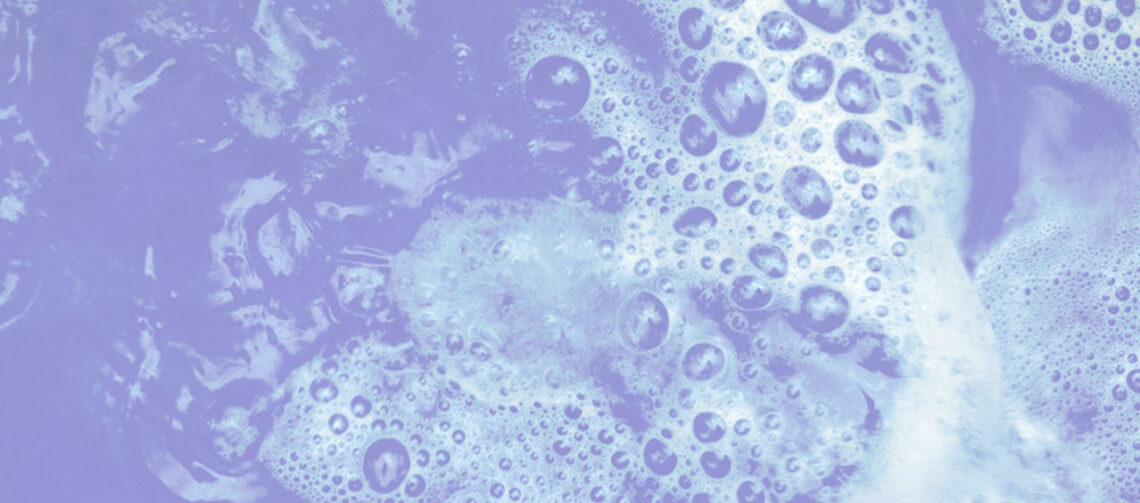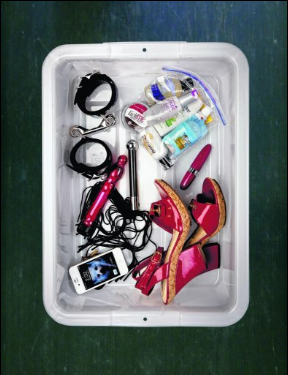
Sex toy cleaning guide
Cleaning may not be the most glamorous thing a person can do with a sex toy, but the cleaning process is vital to keeping a toy in tip-top condition! Don’t worry — it takes mere minutes to clean a sex toy, and the techniques are about as simple as washing your hands.
Nearly all sex toys can be washed with good old antibacterial soap and warm water. There are also some products made specifically for sex toy cleaning, such as Sliquid Shine Toy Cleaner and Afterglow Toy Tissues. These products are gentle, can be used in lieu of soap, and rinse/wipe off easily.
If you have ultra sensitive skin or are unable to use antibacterial soap for any reason, we highly recommend that you only use sex toys made of non-porous materials. Non-porous toys are completely body-safe and will not trap bacteria on their surfaces, so they can be cleaned much more thoroughly than porous toys, and in a wider variety of ways. Almost all the toys we carry are non-porous.
This guide will tackle the different sex toy materials and how each should be cleaned.
Cleaning techniques
There are four basic cleaning techniques. Not every technique can be applied to every toy — be sure to read about specific materials below. Here are the basic instructions for each technique.
- Soap and water: Lather the toy with antibacterial soap and warm water. Let the soap sit on the surface of the toy for 2-5 minutes, then rinse and dry thoroughly.
- Boiling: After a preliminary soap and water scrubbing, submerge the toy slowly in a pot of boiling water and allow it to boil for 10 minutes. Ensure that it stays submerged as it boils. Carefully remove the toy (tongs work well!) and dry.
- Bleaching: Mix a solution of 10% bleach and 90% water. Wash the toy with soap and water first, then submerge the toy in the bleach solution, or spray/wipe the toy with the solution. Let it sit momentarily, then rinse and dry thoroughly.
- Dishwasher: Place the toy in the top rack of your dishwasher and run the dishwasher on a gentle cycle without any soap. Dry.
In each case, toys can be air-dried or dried with a paper towel or lint-free cloth. Let your toys dry completely before storing them.
When should sex toys be cleaned? Well, toys should definitely be washed when you first take them out of their package. They should also be cleaned as soon as possible after use, and sometimes even before use (if they have been stored away for a while).
Here are a few more general rules to keep in mind.
- Unplug and remove batteries from toys prior to washing them.
- If an electronic toy is not fully waterproof, take special care to avoid getting water in the charger socket, on the interface, or inside the casing.
- Remember that for any toy with mechanical parts, boiling and dishwasher cleaning are out of the question.
- Use condoms on toys that will be shared, and toys that are made of porous materials. After removing the condom, wash the toy as usual.
Now, onto the materials!
Silicone
100% silicone is a very hygienic material, as it is completely non-porous. You have quite a few options for how to wash a silicone toy, especially if it does not have electronic parts. You can wash it with warm, soapy water. Or you can boil it, put it in the dishwasher, or clean it with a bleach solution. Remember, never boil a toy or put it in the dishwasher if it has any mechanical parts.
Plastic
Plastic is rigid and non-porous. Wash it with warm, soapy water, or wipe down with sex toy cleaner. Bleaching is also acceptable. Do not boil.
Glass and metal
All of these hard materials are non-porous.
Glass toys can be washed with soap and water. Do not use an abrasive cleaner — it may scratch or dull the surface of the glass. Glass toys may also be boiled, bleached, or placed in the dishwasher. However, depending on the type of glass, the toy may be sensitive to extreme temperatures, so only boil it or place it in the dishwasher if you are certain it is made of sturdy borosilicate glass.
Metal toys, such as the Pure Wand, can be treated with a bleach solution, boiled, or washed with soap and water. The dishwasher is not recommended for these toys, as some rinse agents are bad for some metals. Do not use jewelry cleaners on metal toys.
Porous materials (elastomer, etc)
These materials mimic skin and are very porous, so they can harbor bacteria and are one of the most difficult materials to keep clean. Real-feel materials, such as elastomer, are also quite delicate and can tear easily, so be gentle when cleaning them. Fleshlights specifically should be cleaned with water only — no soap. Other real-feel materials may be able to withstand mild soap, but be sure to fully rinse it away.
Toys made of real-feel materials should be left out to air dry completely before being stored. Because of the porousness of the material, it is very important that residual water is not left on the toy. You may speed up the drying process with Fleshlights by threading a soft cloth through them.
If, over time, you find your toy becoming sticky to the touch, you can dust it with some cornstarch (not talcum powder, as it has been linked to cervical cancer) prior to storage. This will give it a softer feel. Wash off the cornstarch before using the toy again.
Jelly
Jelly is a porous material that is often accompanied by a synthetic, new-shower-curtain type of smell. We do not stock any jelly toys because we are concerned about the potential health risks of the chemicals in many of them. If you own a jelly toy, cover it with a condom before use. Clean it with warm, soapy water, and rinse very thoroughly. Keep an eye out for deterioration in the surface of the material. If the material begins to degrade, throw out the toy immediately.

